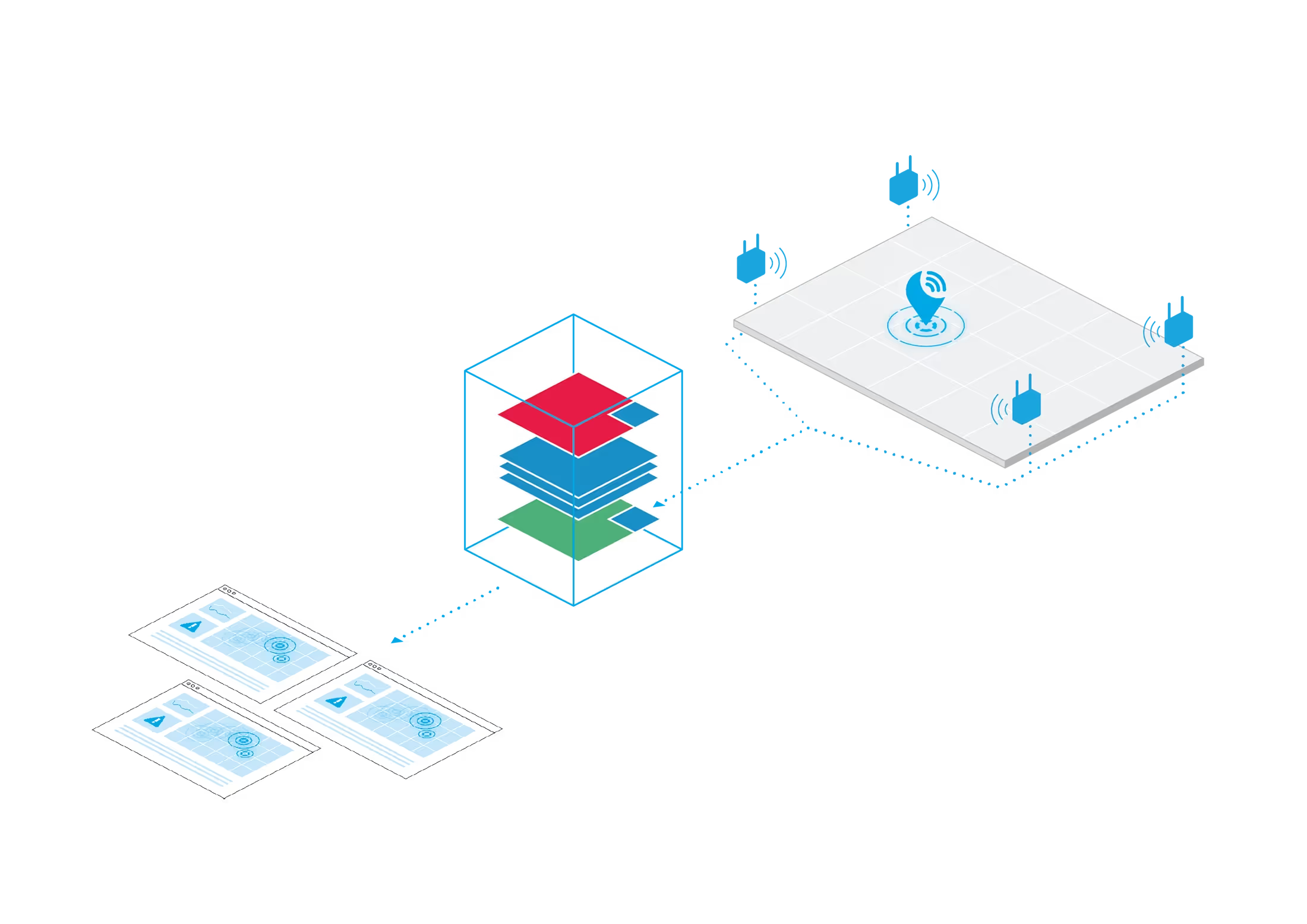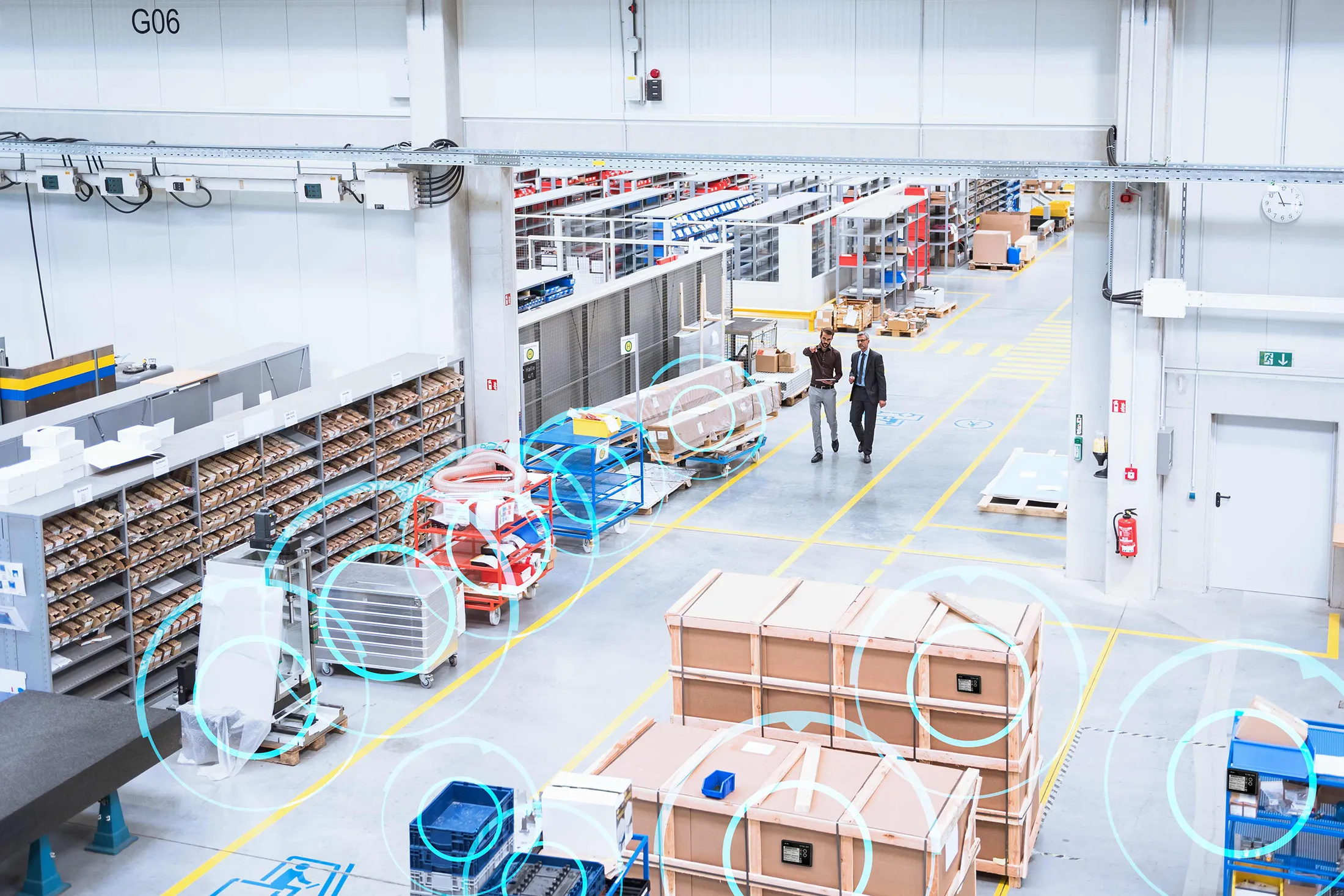Understanding Total Cost of Ownership (TCO) and Its Importance for RTLS Solutions
RTLS deliver strong ROI by boosting efficiency and cutting costs. However, understanding Total Cost of Ownership (TCO) is crucial to unlocking their full value.

Real-Time Locating Systems (RTLS) offer a strong return on investment (ROI) by improving operational efficiency, reducing costs, and enhancing real-time data visibility. KINEXON has proven this in many different projects. However, calculating the true ROI requires a complete overview of all associated costs. While the initial purchase price is important, it’s only one part of the equation—what matters is the Total Cost of Ownership (TCO).
TCO provides a comprehensive assessment of the costs involved in acquiring, deploying, operating, and maintaining a technology solution throughout its lifecycle. For companies considering an RTLS solution, understanding its TCO is crucial to fully appreciating its value.
In this article, we will dive into the components of TCO. We’ll also highlight why evaluating TCO is essential for making informed decisions about RTLS solutions, with a focus on how KINEXON helps minimize these costs to maximize your return.
What is Total Cost of Ownership (TCO)?
TCO is a financial estimate designed to help consumers and enterprise managers assess the direct and indirect costs associated with purchasing and using a product or system over a given period. It includes not just the initial acquisition cost, but also all costs related to deploying, operating, maintaining, and eventually disposing of the technology.
What are the Components of TCO?
- Acquisition Costs: These are the upfront costs incurred to purchase the technology. For RTLS, this includes the cost of tags, sensors, receivers, and any necessary software licenses.
- Implementation Costs: These costs cover the installation and integration of the RTLS with existing systems. This might include site surveys, infrastructure setup, customization, and initial training for staff.
- Operational Costs: These ongoing costs include power consumption, connectivity fees, and the cost of any consumables like batteries for tags.
- Maintenance Costs: This involves the costs of regular maintenance, software updates, hardware repairs, and potential downtime.
- Support and Training Costs: These include ongoing training for new staff, customer support services, and potentially the cost of premium support packages.
- Disposal Costs: Eventually, the technology will need to be retired. Disposal costs can include the cost of removing and properly disposing of hardware.

Why TCO Matters for RTLS
When evaluating RTLS solutions, a comprehensive understanding of TCO can reveal hidden costs that might not be immediately apparent from the initial price tag. This understanding helps businesses make more informed decisions by comparing the true costs of different RTLS options over their operational lifespan.
- Budget Planning: Knowing the TCO helps in accurate budget planning, ensuring that all future costs are anticipated and accounted for.
- Cost-Benefit Analysis: By understanding the TCO, businesses can perform a more accurate cost-benefit analysis to determine the return on investment (ROI) of the RTLS solution.
- Long-Term Savings: Solutions with a higher initial cost might offer lower operational and maintenance costs, leading to greater savings over time. Conversely, a cheaper initial option might have higher hidden costs.
- Vendor Comparison: TCO provides a standardized way to compare different vendors and their solutions, taking into account all potential costs rather than just the purchase price.
How KINEXON Minimizes TCO for RTLS Solutions
KINEXON, a leader in RTLS and indoor location services, focuses on providing solutions that not only deliver high performance but also minimize the TCO for their clients. Here’s how:
- Scalable Solutions: KINEXON’s RTLS solutions are designed to be scalable, allowing businesses to start small and expand as needed without incurring prohibitive additional costs.
- Energy Efficiency: By using technologies like Ultra-Wideband (UWB), KINEXON ensures that the solutions are energy efficient, reducing operational costs related to power consumption.
- Robust and Durable Hardware: KINEXON provides high-quality, durable hardware that requires less frequent maintenance and replacement, lowering maintenance costs.
- Comprehensive Support and Training: KINEXON offers extensive training and support packages, ensuring that clients can efficiently use their systems and minimize downtime and productivity losses.
- Integration Capabilities: KINEXON’s solutions are designed to integrate seamlessly with existing IT and OT infrastructures, bridging the digital and physical world, thus reducing implementation costs and ensuring a smoother deployment process.
- Future-Proof Technology: KINEXON invests in innovative technology to ensure that their RTLS solutions remain relevant and effective, reducing the need for costly upgrades and replacements.
- Proven ROI: KINEXON has generated strong ROI for customers like BMW, Continental, or ASMPT showcasing the real-world value of its RTLS and location services.
Explore more about KINEXON RTLS Pro and KINEXON RTLS Mesh.

Conclusion
Understanding the Total Cost of Ownership is essential for any business considering the implementation of RTLS solutions. It provides a comprehensive view of all costs associated with the technology, allowing for better budget planning, more accurate cost-benefit analysis, and informed vendor comparisons. KINEXON’s commitment to providing scalable, and durable RTLS solutions helps minimize TCO, ensuring that businesses can achieve long-term savings and optimal performance.
By focusing on TCO, businesses can make smarter investment decisions, ultimately enhancing their operational efficiency and bottom line. As a recognized leader in indoor location services, KINEXON offers innovative RTLS solutions that deliver high value and low total costs, making them an ideal partner for businesses looking to implement RTLS technology.
Learn more about the basics of Real Time Locating Systems (RTLS)
More Resources
Stay Up to Date
Subscribe to our newsletter and stay connected. You can unsubscribe at any time.
Ready to automate your industrial operations?
Schedule a meeting with our experts to connect and automate your operations.
Get in touch